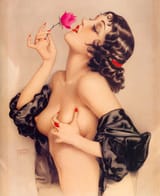Search Results
7/24/2025, 6:49:30 AM
>>8914877
>In the period leading up to and including 1925, legal precedent relied heavily on the Hicklin test, originating in England, which judged works based on their potential effect on the most vulnerable individuals. This approach allowed entire works to be deemed obscene if any part was judged offensive, regardless of the author's intent or the work's overall merit.
>The interpretation of obscenity laws continued to evolve after 1925, eventually leading to the landmark 1933 decision in United States v. One Book Called "Ulysses", which rejected the "partly obscene" test and established the "wholly obscene" test, requiring works to be judged on their dominant effect rather than isolated passages.
tl;dr
>in 1925, creativity was illegal if ANY part was obscene
>it took until 1933 for things to change
now we have to go through this again for the digital age
>In the period leading up to and including 1925, legal precedent relied heavily on the Hicklin test, originating in England, which judged works based on their potential effect on the most vulnerable individuals. This approach allowed entire works to be deemed obscene if any part was judged offensive, regardless of the author's intent or the work's overall merit.
>The interpretation of obscenity laws continued to evolve after 1925, eventually leading to the landmark 1933 decision in United States v. One Book Called "Ulysses", which rejected the "partly obscene" test and established the "wholly obscene" test, requiring works to be judged on their dominant effect rather than isolated passages.
tl;dr
>in 1925, creativity was illegal if ANY part was obscene
>it took until 1933 for things to change
now we have to go through this again for the digital age
Page 1
